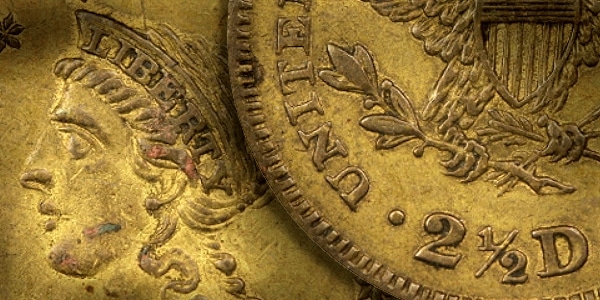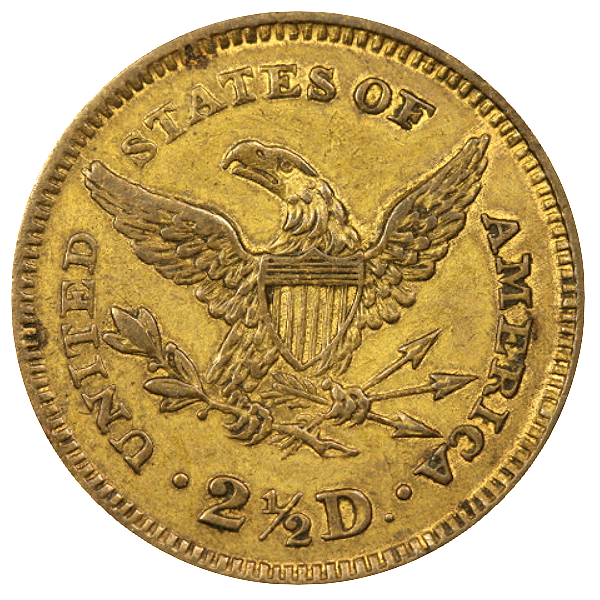
By Harvey Stack – Founder, Stack’s Bowers ……
Part 1 | Part 2 | Part 3
* * *
Counterfeiting, or making something false, has occurred since goods were exchanged for services or other items. If a bag that was supposed to contain wheat was instead full of another grain or even sand, that was misrepresenting a product or counterfeiting.
Since coinage was first struck in the kingdom of Lydia in Asia Minor in the eighth century BCE, counterfeit coins were being made. Gold or silver coins were sometimes copied, imitated, cast, or struck by those who would try to pass them off as the real thing in order to make a profit.
Lead or other metal might be used as the core of the coin, with a coating or plating of precious metal on the surfaces to make it appear as the “real thing”. Sometimes counterfeiters skillfully debased real metal with alloys that let them realize a profit. The true metallic value of a coin was watered down, but it could still be offered for exchange at the same rate as a legitimate coin. Whether it was during the Ancient period, Medieval times, or the modern day, there has always been someone willing to make and pass coins that are not the product of a legal issuing mint.
In ancient times a blend called electrum was used to fulfill the prescribed weight of a coin, making it usable yet not as valuable as it was to be before the blending. It would have the design of the original and appear as if it had the full value of gold, yet the debasement was done even as the value of the gold in this case had risen due to inflationary causes. So the counterfeiter, especially in earlier days, was able to make his fortune by diluting the coins in use. The work in many cases was skillfully done, and these coins could be readily exchanged for goods and services and not detected by people who were uneducated or unaware.
This practice and others have allowed counterfeiters to flourish over time, in all the centuries that coins were used for payment or as a store of wealth.
Unknowingly, many coin collections came to be assembled with counterfeit coins included. Precious metal coins were of limited availability and were especially desired by noble and wealthy people who wanted to collect them. The supplier, banker, or dealer might need additional specimens to sell and so he would buy counterfeit coins or even arrange for them to be made by clever artisans. These could then be sold to the nobility, including kings, princes, lords and their ladies, who collected them as an important part of their wealth. Many counterfeits were cast, others actually struck, with the correct designs denoting what they were. But as these were not struck by a Mint or issuing authority they were false and deceptive, created to pass as real items among those who didn’t know any better.
Skipping ahead in time, counterfeiting happened all over the world after the Second World War.
Gold coins were collected here in the United States, even after the Gold Acts of 1933 and 1934 called in gold coins in this country. However, collectible gold coins were exempt from confiscation by federal authorities. So to gather a “store of wealth” of gold, many people became collectors. Since the supply was small in the United States, Americans looked elsewhere for gold coins. Many were found in overseas vaults and collections, where restrictions on ownership were not in place or were not enforced. But as demand grew in the United States, the value of many of these gold coins went up along with it. Thus, it became worthwhile for counterfeiters to make false coins, which looked like federal issues but were not made in an official mint.
Some of these counterfeits were easily recognized by enforcement agents — in the U.S., this is the Secret Service. Others were more skillfully made and could even fool federal agents. And as the prices of collectible gold coins went up, the public was ‘ripped off” while counterfeiters made even more money.
Let me mention two denominations that were flooding the country. One was the gold dollar, struck from 1849 to 1854. It was a small coin with a nice design, easily recognized by enthusiasts, including by families from Caribbean countries. They loved these gold dollars and gave them as gifts, often to newlyweds for luck — each gift was customarily 13 coins. Assembling groups of 13 at a time put a strain on the supply, and the price of the coins rose from face value to as much as 20 to 30 times that amount. The small size made the coins easy to counterfeit. Money could be made by recreating the coins in gold, and selling them at many times the intrinsic value! As the practice continued, lower-carat gold was used, making the deception even more lucrative.

The same deception occurred with Liberty Head quarter eagle ($2.50) coins, struck by United States mints from 1840 to 1907. These were the favorites of many people who came to the U.S., especially from Asia. In the West, when railroads were being built, many thousands of people came to America for jobs, and worked here as we built our way across the country. The gold quarter eagle design and size became familiar (as it was the only one that might be recognized from circulation) and popular to accumulate. This tradition continued for many, many years, and was evident in America even into the late 1970s. When the price of gold went up, the coins became more desired and harder to acquire. As with the gold dollars, counterfeiters used this as an opportunity to make large profits by fabricating these quarter eagles.

Similar situations of rising value and increased scarcity for different gold coins encouraged the manufacture of counterfeits, not only for United States coins, but also for other scarce coins struck throughout the world.
So these are examples of what the situation was after the Second World War and what brought about the flood of counterfeits and the attempts by the government to prevent these false coins from entering the country. In upcoming articles, I will offer some personal recollections of how this counterfeiting and the government’s attempts to control it affected Stack’s Rare Coins.





I am an avid collector, not a dealer, and have come to find a lot of coins especially Morgan dollars and some gold that are not marked as copy. Why does the sale of these appear to go unchecked
People with criminal intent usually do not follow laws.